TEAM TIP
Apply this method to anticipate— and avoid—unintended consequences before taking action.
Irecently read an article by Daniel Aronson called “Targeted Innovation: Using Systems Thinking to Increase the Benefits of Innovation Efforts.” In the piece, he talks about how “systems thinking can provide some of its greatest benefits by giving companies a way to make sure that the benefits of their innovation efforts are not compromised by lack of a big picture understanding.” To illustrate, Aronson walks the reader through the example of an agricultural firm charged with finding a way to reduce crop damage created by insects. By taking his analysis one step further through a simple tool that I call “The AND Method,” we can identify problems that are likely to arise before they happen and take steps to avoid them.
Making the Problem Worse
PESTICIDE APPLICATION TO CONTROL INSECTS
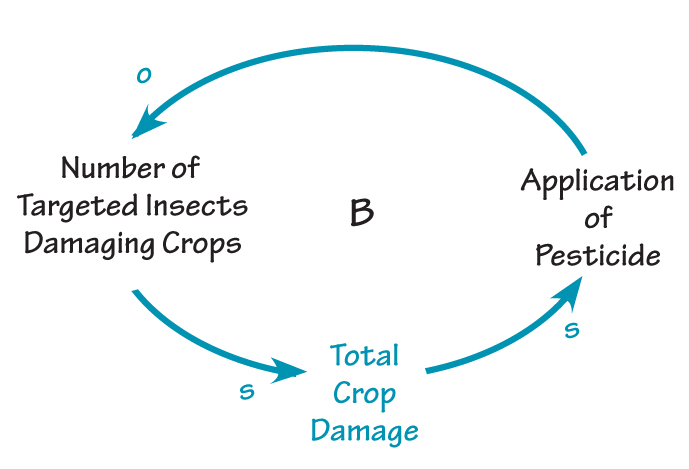
The typical, almost automatic, response to crop damage resulting from pests is to apply a pesticide. In the short run, this approach creates a balancing loop, as depicted in “Pesticide Application to Control Insects”:As crop damage increases, farmers respond by applying a pesticide, which kills a number of the target insects and mitigates further crop damage.
This tactic fails, though, to take into account the system as a whole. Over time, a second feedback process often comes into play (see “Increase in Target Insects Over Time”): As this figure illustrates, a pesticide often has the unfortunate side effect of indiscriminately killing insects, including those who might be natural predators of the target group. After a delay, with fewer predators to keep the population in check, the number of target insects begins to grow again.
INCREASE IN TARGET INSECTS OVER TIME
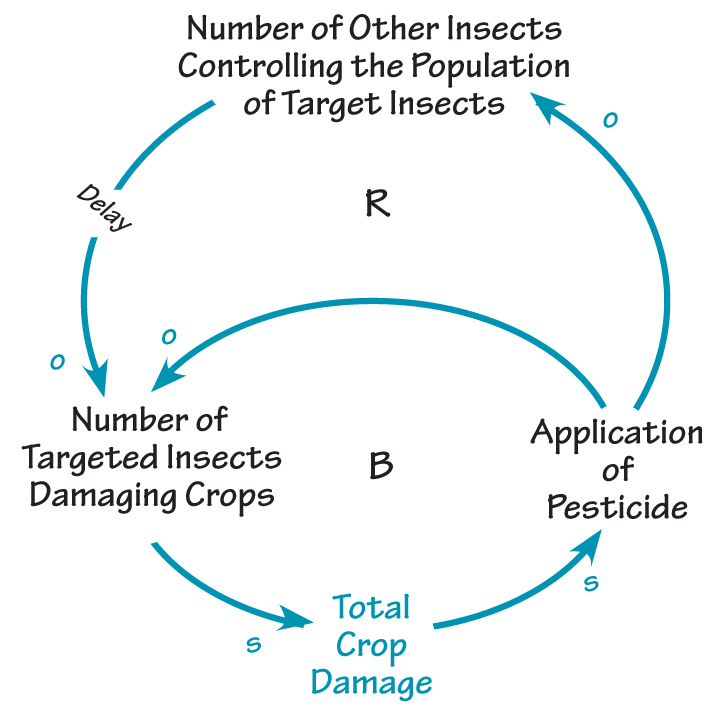
This second process is a reinforcing loop, in that its influence tends to get larger and larger over time. The result of this vicious cycle is that, after some time, the target insects inflict even greater crop damage. Unfortunately, the time delay in the loop—in this case, the delay between the death of the controlling insects and the subsequent rise of the target insect population— can make it difficult to perceive the link between these two variables. Without an understanding of this link, the farmer is likely to reapply the pesticide to counter the resurgent insect problem, further exacerbating the situation. This pattern, in which an action leads to an unintended consequence that makes the problem symptom worse, is a hallmark of the “Fixes That Fail” systems archetype.
Anticipating Unintended Consequences
In his article, Aronson argues that, by using systems thinking to gain a bigger picture of a problem situation, organizations can better understand possible side effects of proposed interventions. As a result, they can design solutions that are more likely to create substantial, lasting benefit. I’d like to propose a method that builds on Aronson’s framework.
As you read what follows, you may argue that the method is contrived because I already know the answer to this scenario. On this point, you would be correct, though I believe that you will find the method valuable even when you don’t know the answer at the outset.
Before you get terribly excited, let me burst your bubble and say that the essence of the method is one word, “AND.”
PESTICIDE APPLICATION TO CONTROL INSECTS
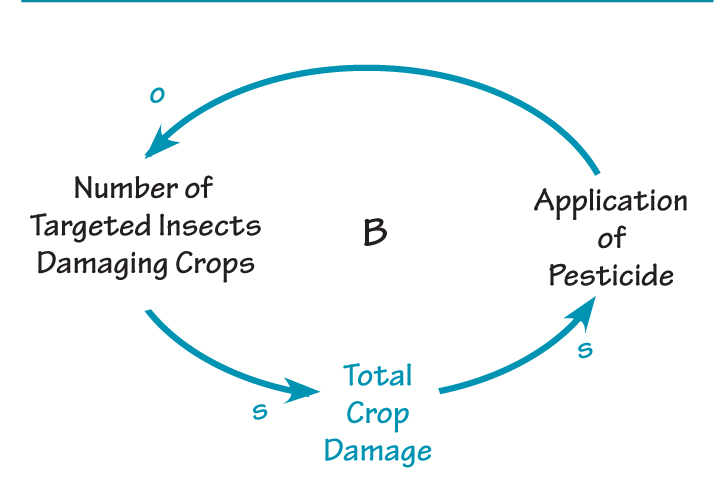
Let’s look at the loop “Pesticide Application to Control Insects” again, but from a slightly different perspective: One of the foundational realizations associated with systems thinking is that, because things are so interconnected, it is almost impossible for an action to have a single effect. This is where the magical AND comes into play. What if before simply running off to apply a pesticide, the farmer were to stop, look at the diagram, and ask, “AND what else is the application of pesticide likely to influence? AND what other interventions might influence the number of target insects damaging crops?”
By considering these two questions, the farmer might end up with the diagram “Increase in Target Insects Over Time” without going through the painful reality of applying a pesticide just to make the situation worse.
Likewise, the farmer might identify another side effect of applying pesticides: Insect populations can develop resistance to certain chemicals,
INCREASE IN TARGET INSECTS OVER TIME
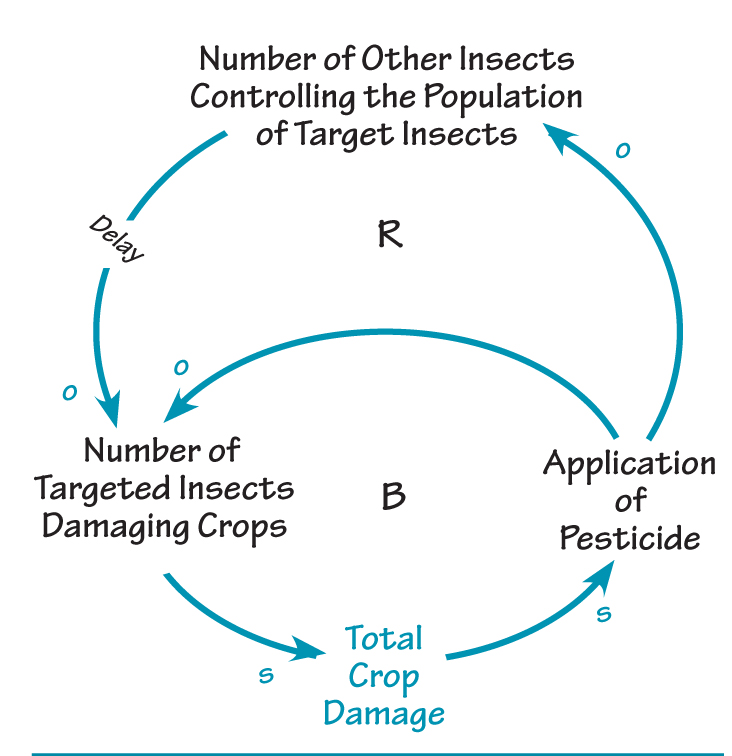
decreasing their effectiveness (see “Insects Develop Immunity Over Time”).
Now we see that the situation is worse than we expected: As the application of pesticide increases, over time, the number of target insects who are immune to the chemical goes up, boosting—rather than reducing—the number of target insects damaging crops. But wait, there’s more! And no, this isn’t an infomercial.
For each variable in this model, we ask, “AND what else does this variable affect?” and “AND what else affects this variable?” For instance, based on these two diagrams, a farmer might be tempted to run out and buy more of the insects that control the targeted pest. But before doing so, he or she would be wise to ask, “AND what else do they control?” and “AND what will they eat if they should decimate the population of target insects?” You get the picture. To keep this process from going on endlessly, though, it is always appropriate to establish a systems boundary, so we can determine what we should consider—what’s inside the boundary—and what’s we shouldn’t consider—what’s outside the boundary.
As supporting evidence for the utility of this approach, if you begin with a balancing loop and a reinforcing loop and employ the AND method to both of them, you can derive the systems archetypes—commonly occurring patterns of behavior— in short order.
INSECTS DEVELOP IMMUNITY OVER TIME
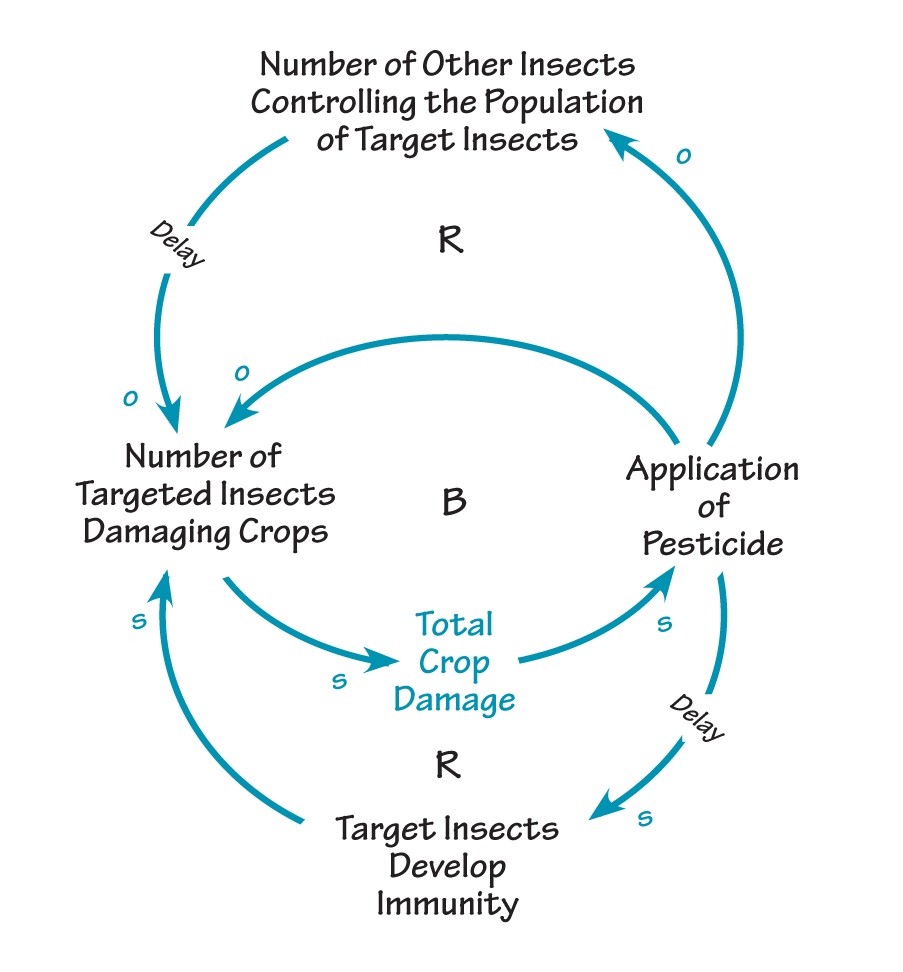
If, by employing this method, you identify a potential archetype at play in your situation, you have a head start on designing ways to intervene. Applying Systems Archetypes by Daniel H. Kim and Colleen Lannon is one source of information on identifying and managing systems archetypes.
Final Word
Sufi Saying: Because you understand 1, you think you understand 2, because 1 and 1 = 2, but first you must understand AND.
